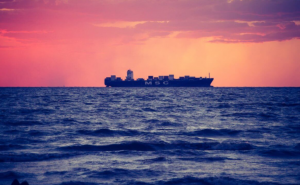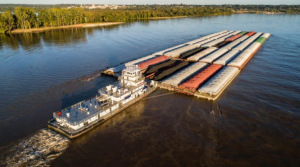
CARGO SHIPS
container vessel with cargo
One of the most common types of sea transport involves using a cargo ship. Cargo ships come in a range of sizes. General cargo ships only have a few holds, while cargo container ships can handle sizable loads. You can always recognize a large container ship by the towering stack of steel shipping containers on its decks and in its holds.
Always ask about the cargo ships available at a potential shipping company. Not only does size matter, but different cargo ships also have their own rigging and loading methods. For example, the benefit of a container ship is that the containers can be loaded off the ship, then further transported via train or truck.
RORO SHIPS
Roll-On/Roll-Off (RoRo) ships typically transport vehicles. They’re a favorite in the maritime shipping industry because of their ease and efficiency. Lifting a vehicle onto a shipping vessel with a crane can be a more extensive proposition, as there’s potential for damage. Driving or rolling the car straight onto the ship is both faster and safer. After boarding, each vehicle is securely braced to the deck of the ship to ensure that it doesn’t move around during the voyage.

BULK CARRIERS
Bulk carriers hold an essential spot in the maritime shipping industry. Unlike cargo and container ships, bulk carriers don’t usually have any rigging set up overhead. That’s primarily because these vessels transport wood chips, various grains, ore, and other materials that are poured into the hold rather than being held in a container within it. It’s a necessary option for shipping certain building materials, as well.
BARGES
Barges are mainly carried along behind other ships, but they’re a common type of sea transport all the same. Forget about the garbage barges you often see. Cargo container ships frequently tow barges behind them to increase their storage space.